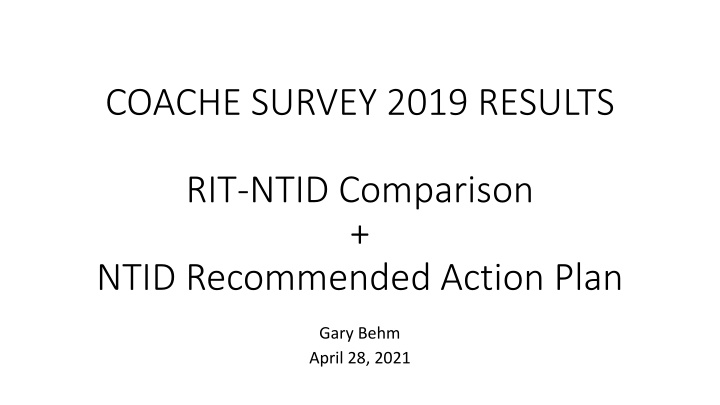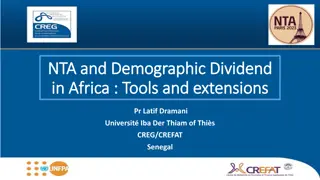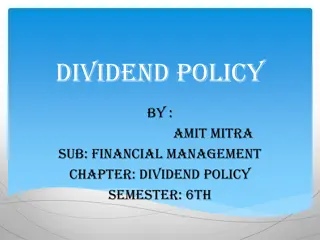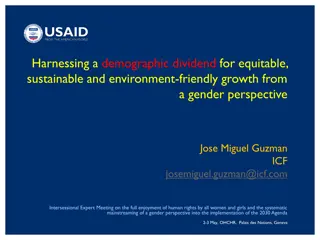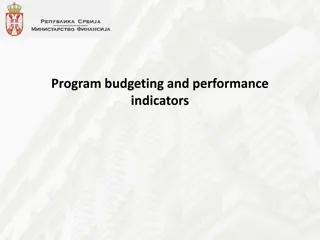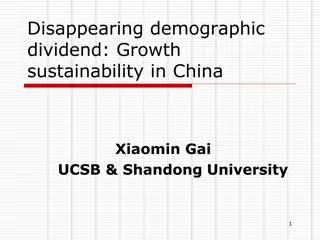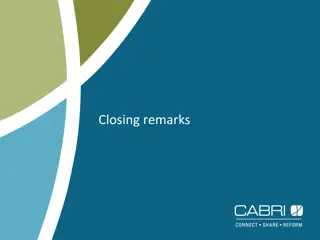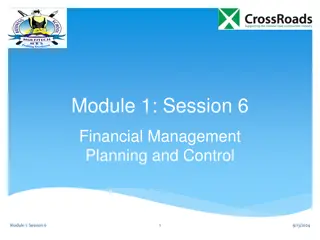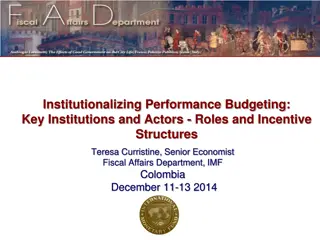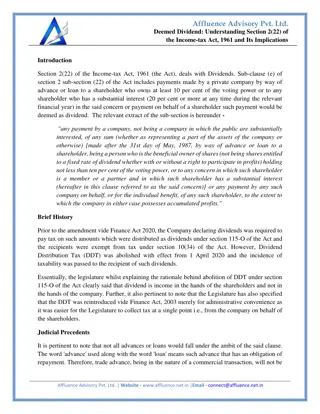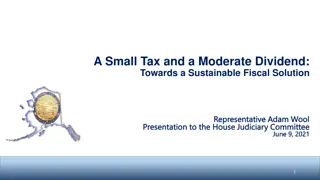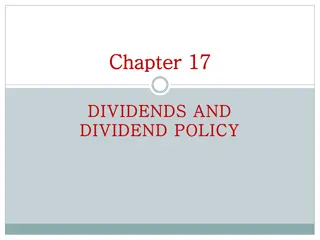Budgeting Sensitive to Demographic Dividend in Mali
Research is being conducted on the Demographic Dividend in Mali, with a focus on budgeting to accelerate harnessing the potential of DD pillars for national development goals. The presentation includes information on a monitoring index for Mali, constructing budgetary functions, linking DDMI to budgetary functions, and concludes with public policy recommendations.
Download Presentation

Please find below an Image/Link to download the presentation.
The content on the website is provided AS IS for your information and personal use only. It may not be sold, licensed, or shared on other websites without obtaining consent from the author.If you encounter any issues during the download, it is possible that the publisher has removed the file from their server.
You are allowed to download the files provided on this website for personal or commercial use, subject to the condition that they are used lawfully. All files are the property of their respective owners.
The content on the website is provided AS IS for your information and personal use only. It may not be sold, licensed, or shared on other websites without obtaining consent from the author.
E N D
Presentation Transcript
COACHE SURVEY 2019 RESULTS RIT-NTID Comparison + NTID Recommended Action Plan Gary Behm April 28, 2021
source of information: RIT COACHE Results 2019, Division-NTID National Technical Institute for the Deaf item short name Benchmark: Nature of Work Research Benchmark: Nature of Work: Service Benchmark: Nature of Work: Teaching Benchmark: Facilities and work resources Benchmark: Personal and family policies Benchmark: Health and retirement benefits Benchmark: Interdisciplinary work Benchmark: Collaboration Benchmark: Mentoring Benchmark: Tenure policies Benchmark: Tenure clarity Benchmark: Promotion Benchmark: Leadership: Senior Benchmark: Leadership: Divisional Benchmark: Leadership: Departmental Leadership: Faculty Governance: Productivity Governance: Trust Governance: Shared Purpose Governance: Understanding Governance: Adaptability Benchmark: Departmental collegiality Benchmark: Departmental engagement Benchmark: Departmental quality Benchmark: Appreciation and recognition *RIT (vs peer schools): strength/concern/neutral. **NTID (vs RIT): strength/concern All RIT Faculty* NTID** mean 3.07 3.24 3.65 3.43 3.38 3.85 2.39 3.44 3.00 3.23 3.07 3.18 3.18 2.95 3.20 3.00 2.96 3.14 3.09 2.96 2.77 3.73 3.42 3.31 3.12 NTID compared to RIT NTID ACTION mean effect sizeconcern strength 3.34 0.3375 3.37 0.1605 3.84 0.2714 3.63 0.2778 3.54 0.1739 3.77 -0.1111 2.48 0.0968 3.35 -0.1034 3.03 0.0300 3.43 0.1770 3.28 0.2121 3.30 0.1043 3.01 -0.1889 2.61 -0.2698 3.43 0.1855 3.11 0.1236 3.06 0.1176 3.03 -0.1264 3.05 -0.0471 2.95 -0.0116 2.83 0.0706 3.71 -0.0235 3.23 -0.2346 3.08 -0.2706 3.20 0.0920 (for items with NTID mean lower than RIT) < NTID s responses are more favorable than RIT. < < < < < NTID could offer workshops to learn how RIT s health benefits are better than peers. < NTID could expand dual-appointed positions between NTID and other RIT colleges. < NTID s responses are more favorable than RIT. < < < NTID could invite RIT leaders to host town hall meetings. < NTID could increase communication on different plans. < NTID s responses are more favorable than RIT. < < < NTID could survey to boost areas of governance. < Being addressed by RIT for all colleges. < Being addressed by RIT for all colleges. < NTID s responses are more favorable than RIT. < RIT to provide chair/head leadership development series with < focus on culture of engagement of faculty, communication, < and climate. < NTID s responses are more favorable than RIT.
Recommended Action Plan Work with NFC to identify priorities for next year: Review of NTID Faculty Workload Guidelines Review of NTID Faculty Salary Benchmarks Review of Faculty Diversity Efforts Review of Faculty Modality Models
